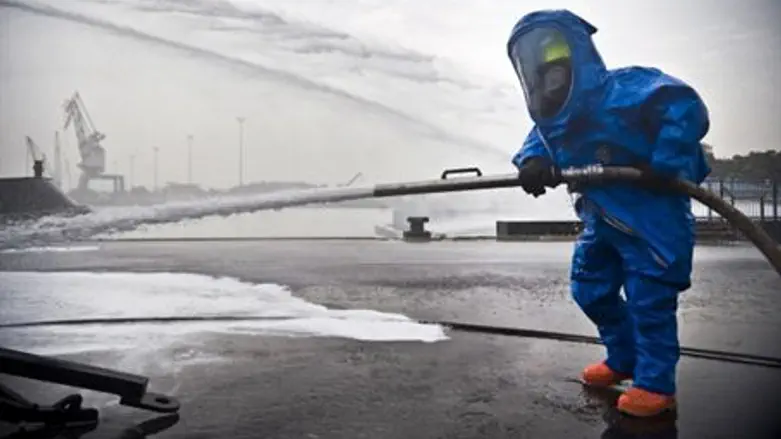
Syrian President Bashar al-Assad has moved some of his chemical weapons arsenal in the direction of Lebanon. If one reads between the lines of a report written by David Ignatius this week in The Washington Post, it is not hard to make the jump between that trip and the possibility of such trucks --- or missiles carrying warheads with their contents -- crossing the border.
The Iranian-backed Shi'ite Hizbullah terrorist organization, which has sent guerrilla fighters to support Assad in his battle with opposition forces, maintains a stranglehold on Lebanon's government, as well as its southern region, where underground bunkers and bases honeycomb the countryside. The terror organization has been generously armed and equipped by Iran, as has Syria in past years.
Israel has maintained a close watch on its northern border, in response to periodic "spillover" from clashes between Assad troops and rebel forces. An Israeli military intelligence expert told Arutz Sheva earlier this month that measures are also being taken to minimize the threat from chemical weapons. Lt. Col. (res.) Mordechai Kedar, a lecturer at Bar Ilan University and a 25-year veteran of military intelligence says actions are quietly being taken to deal with the potential threat posed by Syria's chemical arsenal.
Speaking from his hideout in an Arab nation outside Syria, a Syrian source told Ignatius the Assad regime developed special vehicles equipped to move and mix chemical weaponry. In January, two senior Syrian officers allegedly transported 100 kilograms of chemicals used to create the deadly sarin nerve gas from a base 50 kilometers northeast of Damascus, to a site that was located towards Lebanon, the source said.
Moreover, the Syrian defector revealed that two men with Lebanese accents arrived at the secret base and were trained to mix isopropanol and methylphosphonyl difluoride – the combination that produces the lethal sarin gas. It is known that Syria possesses 500 tons of the two chemicals. But the regime until now has stored them in separate areas so as to avoid the danger of inadvertent lethal combinations.
The source who spoke with Ignatius said he was given the information by a defector who worked inside a chemical weapons network. He revealed the information on condition of anonymity “in hopes of encouraging greater American involvement with the opposition.” Ignatius reported that the information was also independently verified by other sources.
Civilian vehicles were upgraded at a special facility in the Damascus suburb of Dumar in order to transport the chemicals, other sources said. Several months after the start of the civil war, the Syrian government built a portable research laboratory complex in the suburb. At the complex, built in the summer of 2011, civilian trucks were transformed into mobile labs for the production of chemical weapons, according to the sources.
